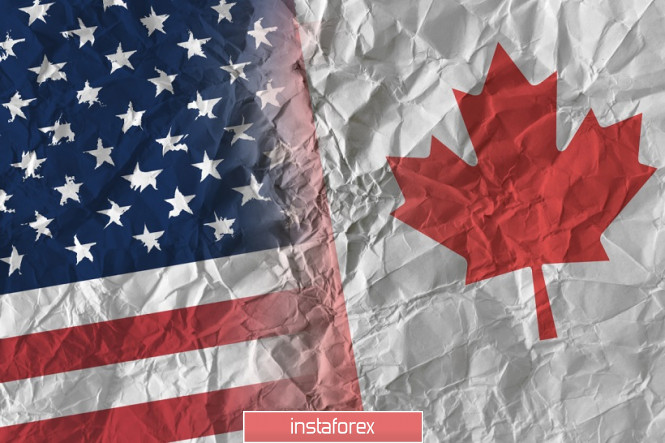
There is a forthcoming conflict between Canada and the USA again: Washington decided to increase duties on imports of aluminum products, and now, the market expects a response from Ottawa. The intrigue will be resolved tonight - the Canadian Department of International Trade will make a statement in the evening, approximately at 15:00 (Universal time). If the Canadians decide to escalate the conflict, the Canadian currency will be under strong enough pressure. The difficult months-long trade negotiations between Washington, Ottawa and Mexico City, which ultimately ended in Trump's victory, are still fresh in the memory. Today, the situation is somewhat different, primarily in the political aspect. Given the proximity of the presidential elections in the United States (less than 100 days left before them) and Trump's current ratings (in many respects, he loses to Democrat Biden), it can be assumed that Canadians are unlikely to be compliant this time around. This means that trade relations between the countries will go through difficult times, and these times do not bode well for the Canadian dollar.

Let me remind you that the United States, Mexico and Canada signed a new USMCA trade agreement at the beginning of last year, which replaced the North American Free Trade Agreement (NAFTA). This deal was renewed on new terms, which is more beneficial for the Americans. Trump's election slogan "America First" under his rule was gradually transformed into the format "America against all", with all the ensuing consequences. And if in the case of China, the United States got stuck in a long multi-year trade war, but Washington coped with neighboring countries relatively quickly.
Although this term is not entirely correct here: the negotiations lasted for two years amid regular threats from Trump to increase trade barriers between the countries. The uncertainty on this issue was reflected in the determination of the members of the Canadian Central Bank, and in the investment climate of the country. For example, in October 2017, the USD/CAD pair jumped by almost a thousand pips after the NAFTA deal fell through once again. In the process of discussing a new North American free trade agreement, the American president changed the previously agreed conditions several times and refused to sign the preliminary agreement documents at the last moment, citing insufficient benefits. As a result, Canada was forced to make significant concessions (especially in the dairy industry), putting an end to a months-long negotiation epic.
This background suggests that the current trade conflict may also go into a prolonged phase, whereas today's announcement by the Canadian Department of Commerce may act as a trigger for the impulse growth of the USD/CAD pair.
The next stage of the trade confrontation began with the announcement of Donald Trump about the decision to impose an additional 10 percent duty on some Canadian aluminum products from August 16. He said that Canada benefits from the United States and harms the American aluminum industry. According to the American press, the White House took this step after Washington was unable to convince Ottawa to introduce quotas on its metal exports. At the same time, in an additional statement explaining Trump's decision, it was clarified that "imports from Canada of the product, which accounts for the largest share of Canadian aluminum exports in America, exceeded the historical level." More specifically, in 2019, Canadian aluminum exports amounted to $ 8 billion 330 million. In 2018, according to the World Bank, Canada was the largest exporter of aluminum. In the States, ingots, blocks, billets, including those of a thin section, are made from such material.

During the trade war between Canada and the United States (which preceded the NAFTA trade negotiations), Washington imposed a 25 percent surcharge on steel and a 10 percent surcharge on aluminum. According to agreements reached early last year, the United States canceled these measures: Washington and Ottawa agreed that they would control imports, and if the country "supplies too much products," the other may re-introduce tariffs. And now, after a year and a half, Trump considered that the import of Canadian aluminum "fills the American market and kills jobs" and returned the duties.
Thus, we will find out tonight whether Canada will respond to the US aluminum duties or take a more diplomatic position. The first reaction of the Canadian dollar to Trump's decision was negative: the USD/CAD pair has been growing for two days. It strayed away from the support level of 1.3250 (the lower line of the Bollinger Bands indicator on the daily chart) and has already risen by a hundred points. If Ottawa "accepts the challenge" and decides to escalate the trade conflict, the pair will at least test the nearest support level of 1.3430, which corresponds to the Bollinger Bands middle line on the same time frame.